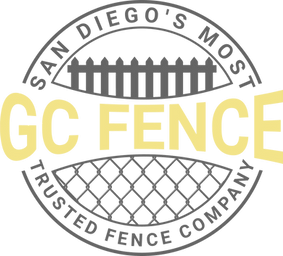Installing a new fence is a practical way to improve your property’s security, privacy, and curb appeal. But whether you’re fencing a backyard, front yard, or full perimeter, understanding the costs involved is crucial for avoiding budget overruns. From materials to labor and permits, several variables impact your total fencing cost. This guide offers a comprehensive breakdown to help you plan and budget wisely for your next fence project.
1. Determine Your Fencing Goals and Property Size
Before diving into the numbers, consider what you want from your fence:
- Privacy: Taller fences like wood or vinyl panels
- Security: Chain-link or metal fencing
- Aesthetic appeal: Picket fences, decorative iron
- Pet or child containment: Durable, enclosed options
Next, measure your property line to calculate the total linear footage. The average residential fence project ranges from 100 to 300 linear feet, which directly impacts material and labor costs.
2. Choose the Right Fence Material
Material selection plays the most significant role in your project’s overall cost. Here’s a breakdown of popular fence types:
Wood Fencing
- Cost: $15–$30 per linear foot
- Pros: Natural look, customizable, good privacy
- Cons: Requires regular maintenance and sealing
Vinyl Fencing
- Cost: $20–$40 per linear foot
- Pros: Low maintenance, long-lasting, weather-resistant
- Cons: Higher upfront cost, limited color choices
Chain-Link Fencing
- Cost: $10–$20 per linear foot
- Pros: Economical, durable, great for pets
- Cons: Less privacy, industrial appearance
Aluminum or Wrought Iron Fencing
- Cost: $30–$60+ per linear foot
- Pros: Elegant, strong, low maintenance
- Cons: High initial cost, limited privacy
Composite Fencing
- Cost: $25–$50 per linear foot
- Pros: Eco-friendly, durable, low maintenance
- Cons: Costly, fewer style options
3. Understand Labor Costs
Professional installation typically adds $5–$15 per linear foot to your total. Factors that affect labor pricing include:
- Fence height and complexity
- Site preparation (grading, clearing)
- Post-digging and cementing requirements
- Local labor rates and contractor expertise
DIY vs. Professional Tip: DIY can save money, but professional installers ensure long-lasting, code-compliant results. Mistakes in DIY projects often cost more to fix later.
4. Additional Cost Factors to Consider
When budgeting, remember that fencing projects include more than just materials and labor. Here are common add-ons:
- Permits and Zoning: $20–$100+, depending on location
- Old Fence Removal: $3–$5 per linear foot
- Gates: $100–$750 per gate, depending on size and material
- Paint or Stain (for wood fences): $1–$2 per linear foot
- Decorative Features or Finishes: $5–$15+ per linear foot
Always get multiple quotes and ask for itemized estimates to avoid hidden fees.
5. Sample Budget for a 150-Foot Fence
Here’s a sample cost estimate for a 150-foot wood fence:
| Item | Estimated Cost |
|---|---|
| Materials ($25/linear foot) | $3,750 |
| Labor ($10/linear foot) | $1,500 |
| Permit Fee | $50 |
| Old Fence Removal | $450 |
| One Gate | $200 |
| Stain and Sealant | $300 |
| Total Estimate | $6,250 |
Use this as a baseline to build your own budget depending on the material and property size.
6. Tips for Staying Within Budget
- Get at least three professional quotes for comparison
- Ask about seasonal discounts; off-season projects may be cheaper
- Bundle projects (e.g., fence and deck) for better pricing
- Buy materials in bulk if doing DIY
- Choose long-lasting materials to reduce maintenance costs
- Inspect for underground utilities to avoid costly surprises during digging
7. Financing and Payment Options
Many fencing companies offer financing or payment plans. Explore options like:
- 0% interest promotional offers
- Home equity loans or lines of credit
- Credit card payments for smaller jobs
- Pay-as-you-go material purchases for DIY builds
Choose a plan that fits your financial situation without sacrificing quality or safety.
Conclusion: Build Smarter with a Detailed Fence Budget
Budgeting for your fence project ensures that you stay on track and avoid financial surprises. From understanding material choices and labor fees to accounting for permits and finishes, each step of the process contributes to your total investment. By planning ahead and exploring all your options, you’ll enjoy a beautiful, functional fence that adds long-term value to your property.



